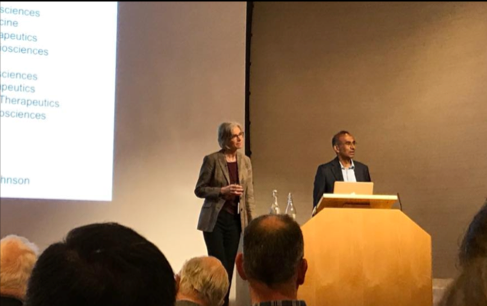Author: Alexis Gkantiragas
Clustered regularly interspersed short palindromic repeats- or the far catchier CRISPR for short is often described as ‘precise molecular scissors’. Parts of the system were first noted over 30 years ago but only recently has it been put together as an interesting example of bacteria protecting themselves against viruses. The CRISPR-Cas9 complex is a large protein which, once it recognizes a short specific segment of target DNA, will induce a precise cut. Using chunks of virus DNA integrated into the bacterial genome, bacteria can form an immune system memory. Profoundly, this suggests that the bacteria are able to alter the course of its evolution based on its environment, implying non-Darwinian evolution.
So, what is the relevance of an obscure system like this? Put simply, the same tools that bacteria use to modify themselves can be used by us to modify bacteria, many other organisms, or even ourselves… In October 2017 ex NASA scientist Josiah Zayner became the first person to genetically modify himself, doing so on a livestream at a biotech conference. Having genetically modified bacteria before, I was curious to try the new technology myself so I ordered the basic CRISPR kit sold by The OdinTM. This kit is legal to buy and use though policy may change so please check before ordering one yourself!
Since the experiments take several days to complete I decided to wait until after my exams had finished. And so it was that my flat-mate, in a post exam haze staggered into our shared kitchen to find me holding an Eppendorf labelled E. coli while dressed fully in lab coat, gloves and goggles. The experiment itself was incredibly simple, the CRISPR-Cas9 system is used to make a single letter change in the bacteria’s DNA that gives it resistance to the antibiotic streptomycin. You try and grow both edited and non-edited E. coli on a plate laced with the antibiotic and if it has worked you will, after 48-72 hours see growth on the plate with edited E. coli only.
It was almost impossible to maintain anything close to a sterile environment in a kitchen shared with 9 people. I maintain that there were far greater biohazards in my kitchen than anything my kit could create. That being said, it shouldn’t make any difference since bacteria from the surrounding air wouldn’t be able to grow in the presence of antibiotic, so even if my plates were contaminated, I still know that I have successfully modified the bacteria.
Jennifer Doudna gives a talk at the Royal Society. Photo credits Florian Hoffmann
It was quite fitting then that shortly afterwards I was lucky enough to see Dr. Jennifer Doudna, the woman who first discovered and developed the practical applications of CRISPR, give a talk on CRISPR at the Royal Society. In her concluding remarks she noted the importance of developing international regulations on how the new technology may be used and on humans, animals and in agriculture. While my experiment had negligible risks associated with it, it shows that CRISPR is a powerful and accessible technology. Target malaria is a group which has looked into releasing mosquitos modified using CRISPR as a way of eliminating malaria. This could save half a million lives per year but releasing modified organisms into the environment on this scale could have unwanted consequences. On the so called ‘biohacking’ front attempts have been made in the past to make plants which glow in the dark enough to use as lamps though largely most of the movement seems to have focused primarily on making craft beers.
As scientists are using the technology for good, they also are aware of the problems. Organizations like the Genome Writers Guild (https://www.genomewritersguild.org) and the Association for Responsible Research and Innovation in Genome Editing (ARRIGE) (http://arrige.org) are popping up to address the issues, find ways to use CRISPR in ways that benefit all of society, and help humanity grow. Clearly access is an area that needs to be reviewed. If a first-year undergraduate student can access the technology, then so can everybody else. To what extent this is a good thing and simultaneously terrifies me, I am still undecided.


